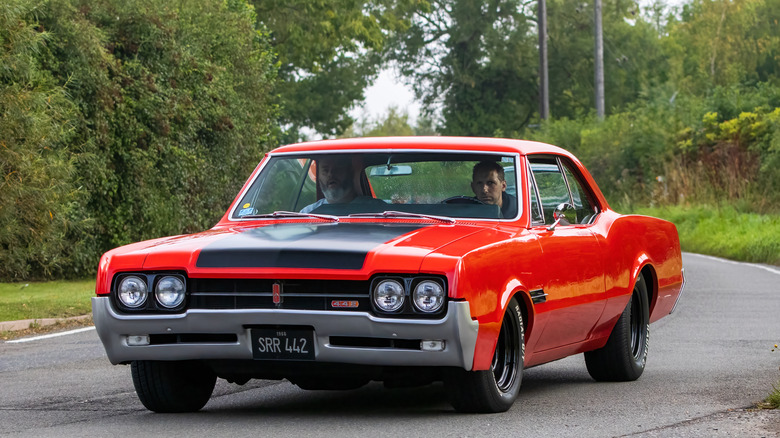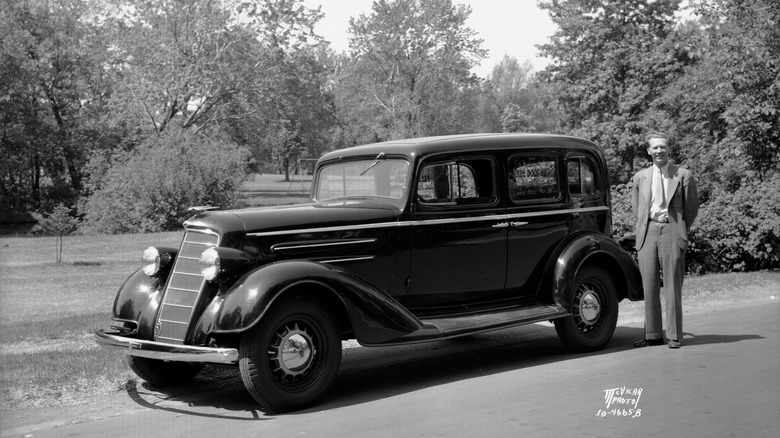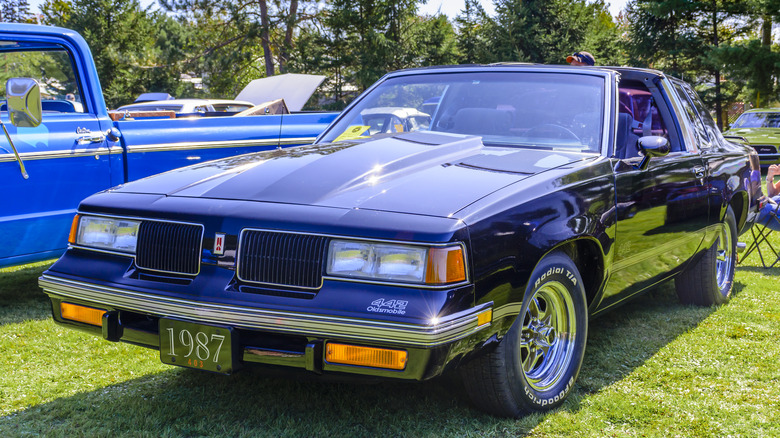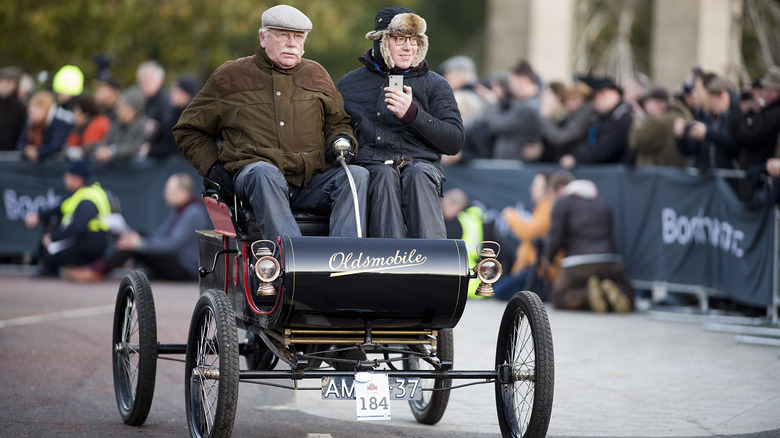What Ever Happened To Oldsmobile?
My first car was a 1992 Oldsmobile Cutlass, and it was a beauty. Thanks to a huge dent in the side, a jerry-rigged horn made from a doorbell glued to the steering wheel, and a fuel gauge frozen on "Empty," I got a substantial discount. It cost me $1,000 in cash, so expectations were quite low.
But don't judge a car by its paint job. That Oldsmobile carried me 100,000 miles without a hiccup, and all it took was regular oil changes to keep it running. In fact, after a faithful five years of daily use, my Cutlass met its end when some black ice sent it smashing into a curb. The entire suspension was ruined, but I think the motor could have kept running for years.
Today, Oldsmobiles are exceedingly rare. After 106 years of existence, the brand officially went out of business in 2004. The reasons for its demise are multi-faceted, but it all boils down to declining sales. With names like Honda, Toyota, and Ford taking the spotlight, the General-Motors-owned Oldsmobile couldn't maintain the global brand recognition to survive the competition. It also seems the bland, uninspired designs of their newer models ruined the brand's reputation for uniqueness. The final Oldsmobile model line looked, well, old.
Its downfall was gradual. Considering the history of the Oldsmobile, which was once renowned for its innovation and eye-catching muscle cars, it's clear that the brand was declining for decades before its official discontinuation. So, what happened?
The century-long road to failure
The Oldsmobile wasn't always a General Motors brand. Founder Ransom E. Olds released the first Oldsmobile model in 1897. Interestingly, Olds was the first to design and implement the mass-production assembly line, preceding Henry Ford's famous factory by several years. This first mass-produced vehicle was called the Oldsmobile Model R "Curved Dash," and thousands rolled off the assembly line in the span of about five years.
Though Olds invented the assembly line, Ford won the fame. Ford tweaked Old's design in 1908 with a belt-driven process that could produce a fresh Model T in only 93 minutes, and just about every American auto manufacturer, including Oldsmobile, quickly copied the design.
That same year, GM purchased the Oldsmobile brand and kicked off operations with the 1910 release of the Limited Touring Series 23. Exceedingly expensive and packed with cutting-edge tech, the Limited put Oldsmobile on the map for luxury, innovative car designs. It even had goatskin upholstery and a built-in clock, which foreshadowed the leather seating and kitted-out dashboards of later Oldsmobile models.
A reputation for innovation
Under the direction of GM, Oldsmobile became a household name for an entire generation, and its reputation for innovation hit the high-water mark in the 1940s and '50s. One of the most important moments in the history of the Oldsmobile was its introduction of the first automatic transmission in a mass-produced car in 1938. And in 1974, it was the first consumer car brand to offer an exciting novelty: Air bags.
Oldsmobile's innovations are an integral part of the modern consumer vehicle. But as the 21st Century approached, that reputation took a death spiral, and the previous generation's fondness for models like the Cutlass, Alero, and Starfire was left in the past.
The Oldsmobile's success in its heyday was driven by a reputation for innovation and uniqueness. When it lost that reputation, the sales numbers dropped. And they continued dropping, year after year, model after model. In the '90s, the brand was flailing. There were six managers in the span of 13 years, suggesting a scramble to reinvent the brand in the face of imminent failure.
A legacy fallen
But the decline of Oldsmobile goes back further than the '90s. In the late 1970s, Oldsmobile's direction made a drastic turn. New Olds models began to look similar to other GM-brand cars, and it became difficult to distinguish between the different GM brands. Each new Pontiac, Chevrolet, Buick, and Oldsmobile was noticeably similar. It's hard to tell an Oldsmobile 350 from a Chevrolet 350. Another example of the uninspired designs of the time is the unusual luxury minivan, the Oldsmobile Silhouette, a bland-looking model that hit the market in 1989 to a lukewarm reception.
And it wasn't just aesthetics that were indistinguishable. GM began secretly installing Chevy engines in their Oldsmobiles, a scandal that would cost the company millions by the time the court case was settled in 1981.
By the 1980s, the unique style and tech-savvy features of the Oldsmobile were gone. It seems GM failed to recognize what made the Oldsmobile a success in the past. Instead of bolstering its reputation for uniqueness and innovation, the American auto giant decided to compete with rival Honda by promoting the Oldsmobile as a "Honda alternative." This was the final abandonment of what set the Oldsmobile apart from the pack, and its fate was basically set in stone.



